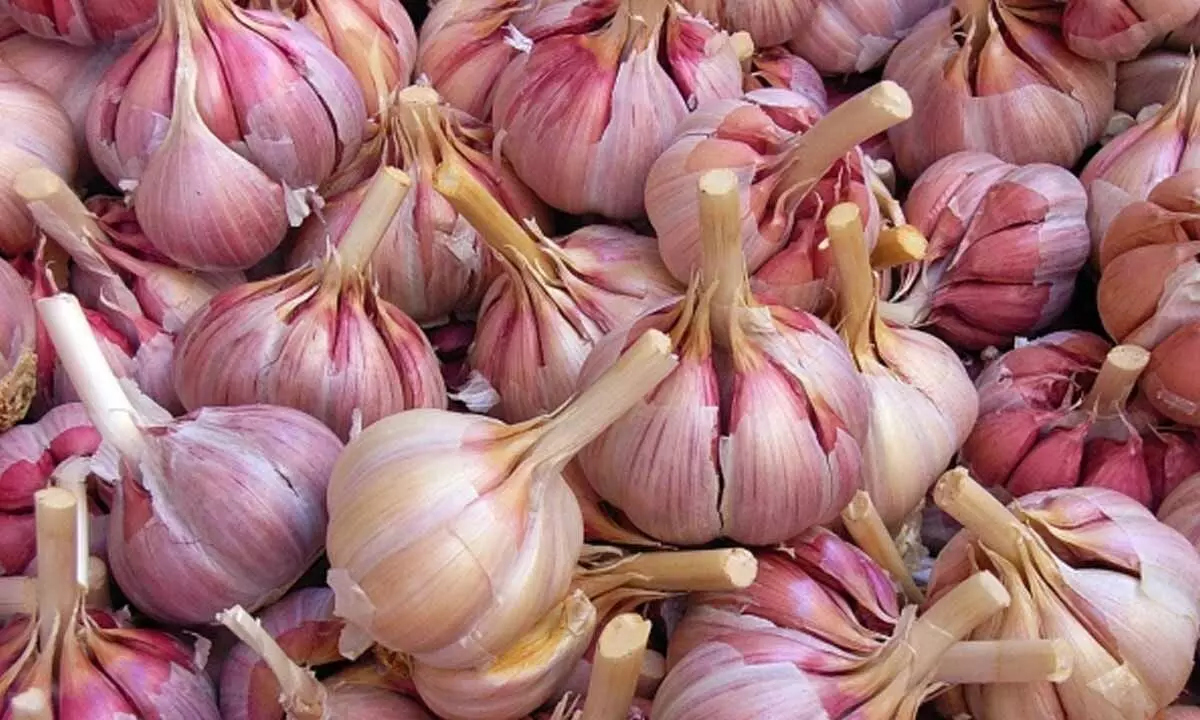Why are MP farmers throwing away garlic crops?

Why are MP farmers throwing away garlic crops?
There have been several calls to allow garlic export after several video clips on social media showed farmers from Madhya Pradesh throwing out or burning their crops, allegedly over low prices of the allium.
There have been several calls to allow garlic export after several video clips on social media showed farmers from Madhya Pradesh throwing out or burning their crops, allegedly over low prices of the allium.
One clip making rounds showed the crop being dumped into a river, while another showed farmers pouring petrol on garlic and setting it on fire in Mandsaur, which has the state's largest garlic market. Several incidents like these have been reported in Madhya Pradesh in the last few months.
The price of garlic is so low that farmers cannot even recover the money they invested in cultivation, Jagdish Patel told Down To Earth. The farmer from Rajoda village in Dewas cultivates wheat, onion and garlic.
This year, Patel grew garlic on three bighas of land or 0.6 acres. It cost him around Rs 30,000 per bigha of land, meaning he spent around Rs 90,000. Garlic crops require special additives and the fields need to be weeded and graded by hand, which drives up the cost.
Patel's crop yield was around 4,750 kilogrammes. However, the current market rate for garlic is around Rs 100-150 for 50 kg. "Farmers can't even recover the cost of tilling the land at these rates," the farmer told DTE.
The harvest has been slightly low for the last three years but the prices are even lower. The harvest quantity would reach up to 45 quintals per acre earlier, Patel said. Usually, prices increase when the harvest is less.
The MP government had started the Bhavantar Bhugtan Yojana, or price difference payment scheme, in 2017, the farmer said. The government pays farmers the difference between the official minimum support price (MSP) and the rate at which they sell their crops, whichever is higher. Patel sold his crops under the scheme five years ago but is yet to receive the difference amount. "I am facing yearly losses and wonder whether it is worth farming garlic. But I do not have any choice," he said.
A farmer in Sehore district's Kharda village said he would not cultivate garlic and onions anymore. Ashok Parmar said he spent around Rs 45,000 this year on growing onions and garlic on two acres of land.
Parmar spent Rs 7,000 per quintal on garlic seed; however, the rate for the harvest is now Rs 400-500 per quintal. "I have incurred huge losses. There are no guarantees that farmers will receive the MSP either. My family will starve like this," he said.
Mandsaur, Shajapur, Ujjain and Neemuch districts in the Malwa region of the state produce garlic. A government scheme called one district one product (ODOP) is also run in the state and Mandsaur district has been selected for garlic.
Garlic is also the most important crop in the region. Chief Minister Shivraj Singh Chouhan had issued directives to export garlic and sell it all over the country after a review meeting of the district two months ago.
Chouhan had also instructed that crops from Mandsaur be branded and modern garlic processing work be promoted.
The area producing garlic has more than doubled in the last 10 years. The crop was being grown on 94,945 hectares of land in 2011-12, which increased to 193,066 in 2020-21, according to the Economic Survey of Madhya Pradesh.
The production increased from 1.15 million metric tonnes to 1.98 million metric tonnes in the same period. However, the marketing for the allium crop is still aching even though the production has increased.
arlic does not come under the minimum support price and there is no provision for it in the central government's export policy either, said Ravindra Chaudhary of Yuva Kisan Sangathan. "The prices of garlic are up to the open market, so garlic farmers are in a lot of trouble," said the member of the farmers' body.
There is no demand for indigenous garlic in India anymore, Chaudhary claims. Garlic from China and Iraq is larger in size and is, therefore, in demand. The allium is being sold for Rs 70 per kg at supermarkets, the farmer activist also pointed out, even as farmers are dumping their crops. Garlic paste retails at Rs 25,000 per quintal, too, he said.
"The government needs to come up with the right policies to safeguard the interests of farmers," Chaudhary said. Another market intervention scheme by the Centre provides aid to farmers if crop prices go down by 10 per cent or more if there has been a bumper harvest. However, garlic farming does not qualify for it.
"Garlic cloves are smaller this time, which is why the prices are so less," said Sanjay Mittal, who trades garlic in Mandsaur Mandi. "Around 25-30 per cent of crops were damaged this year. Some crops are selling for Rs 100 per quintal while some can go for Rs 11,000, too," the trader claimed.
There was a huge demand from Gujarat last year for garlic powder, which is not there this time. Overbuying last year may have led to less demand, said Mittal. "Garlic prices drop drastically every 4-5 years," he said.
The operations at the Mandsaur Mandi is going smoothly, said Jagdish Singh Parmar, secretary of the market. "The mandi provides its selling arrangements and other facilities. We do not have control over the rate," he said.
(Courtesy: Down To Earth)


















